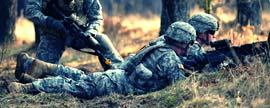Counseling techniques are methods that leaders can use to achieve a desire impact on the soldier. ATP 6-22.1 provides the following information.
2-35. The Army leader can select from several techniques when counseling subordinates. These techniques may cause subordinates to change behavior and improve upon their performance. Counseling techniques leaders may explore during the nondirective or combined approaches include:

The nondirective approach to counseling is suggesting a course of action, but allowing the subordinate to take their own approach.
- Suggesting alternatives: Discuss alternative actions that the subordinate may take. Leader and subordinate together decide which course of action is most appropriate.
- Recommending: Recommend one course of action, but leave the decision to the subordinate.
- Persuading: Persuade the subordinate that a given course of action is best, but leave the final decision to the subordinate. Successful persuasion depends on the leader’s credibility, the subordinate’s willingness to listen, and mutual trust.
- Advising: Advise the subordinate that a given course of action is best. This is the strongest form of influence not involving a command.
2-36. Techniques to use during the directive approach to counseling include:
- Corrective training. Teach and assist the subordinate in attaining and maintaining the required standard. A subordinate completes corrective training once consistently meeting standards.
- Commanding. Order the subordinate to take a given course of action in clear, precise words. The subordinate will face consequences for failing to execute.
Read The Mentor: Everything you need to know about leadership and counseling for more information about Counseling, Leadership, Corrective Training, and Separations in the Army.














